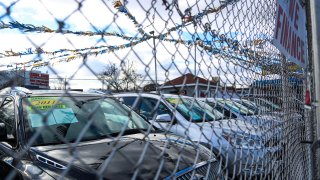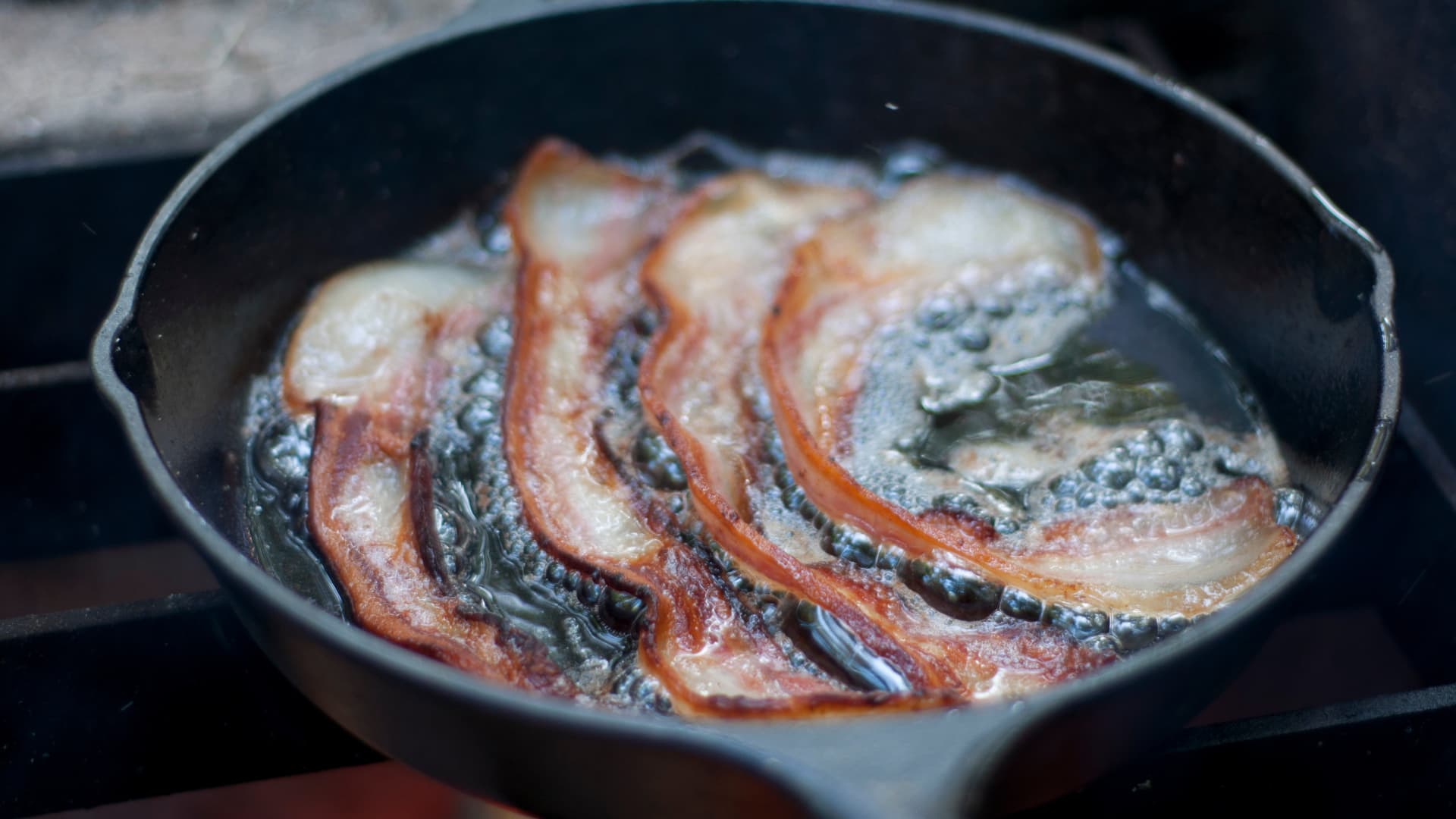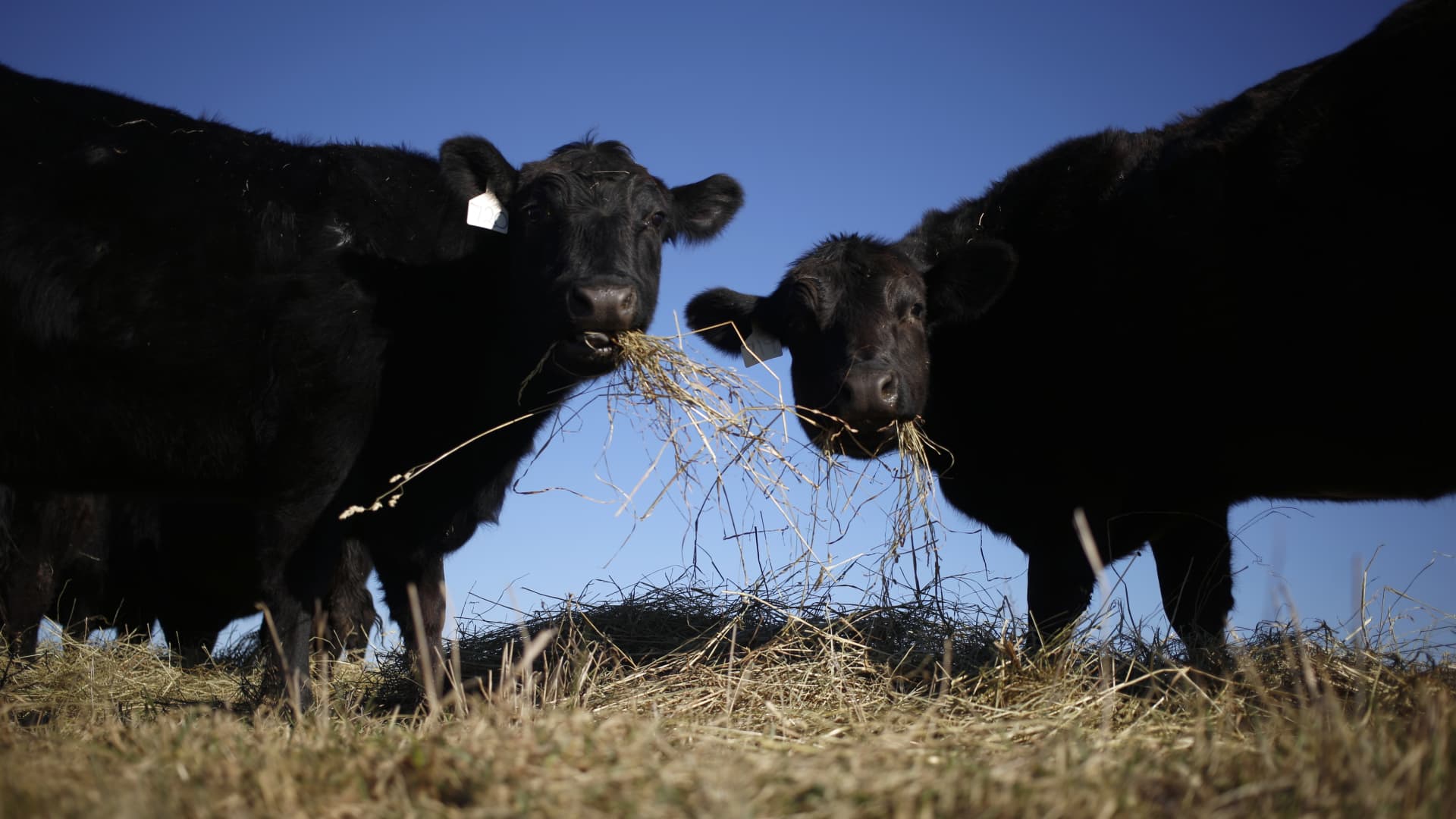
- Inflation peaked in 2022 at its highest levels since the early 1980s.
- However, consumers saw prices fall for certain items, largely in consumer electronics, used cars and beef.
- Prices for rental cars and trucks have followed a similar trajectory.

In a year of soaring inflation across the broad U.S. economy, some corners of the consumer market did the opposite: They deflated in price.
The largest declines, on a percentage basis, were concentrated in categories like consumer electronics, beef, and cars and trucks, according to the consumer price index.
Get Tri-state area news and weather forecasts to your inbox. Sign up for NBC New York newsletters.
Here are the goods that deflated the most in 2022.
Consumer electronics

Several consumer electronics topped the list: smartphones; televisions; "other" video goods excluding TVs; and computers, peripherals, and smart home assistants. Their respective prices fell by 22.2%, 14.4%, 8.6% and 5.8% in 2022.
Money Report
Consumer electronics generally fall in price over time, as measured by the CPI and other inflation metrics. That's largely been the trend since 2006, according to CPI data for information technology, hardware and services, for example.
The pandemic era was an exception, as households upgraded and bought new tech devices amid stay-at-home orders, thereby buoying demand while important parts like semiconductor chips were in short supply.
Consumers might find the idea of this broad deflation trend odd, though, when sticker prices for popular items like smartphones, televisions and computers don't seem to have fallen.
The deflationary dynamic is more a measurement quirk than a reflection of what consumers pay out of pocket, according to economists. The U.S. Bureau of Labor Statistics adjusts technology prices for quality — improvements in microchips, software and screen resolution, for example — that gives the illusion of a falling price on paper.
In other words: Better quality for the same money yields deflation in the eyes of federal statisticians.
"You're getting more bang for your buck," said Tim Mahedy, senior economist at KPMG. "You're still paying $800 for an iPhone, but your iPhone is a lot better."
This economic modeling is known as a "hedonic quality adjustment." The BLS uses this method for consumer appliances, electronics and apparel items, for example.
That measurement dynamic coincides with weaker demand, which is partly a function of consumers not having to stay indoors as they did during the pandemic era, and the easing of supply shortages.
"It has been the same story for past 20 years," Andrew Hunter, senior U.S. economist at Capital Economics, said of the general deflationary trend for consumer electronics. "It now looks to be returning over the past six months or so."
More from Personal Finance:
Don't forget about your old 401(k) if you quit a job or are laid off
4 key money moves in an uncertain economy
Life expectancy can have a greater impact than inflation on retirement savings
Used cars and trucks, rental vehicles
Prices for used cars and trucks were among the first to spike as inflation took hold in early 2021. The category inflated by 37.3% that year — the most of any item outside of energy commodities like gasoline and fuel oil, according to the consumer price index.
Now, used car and truck prices are in retreat. They deflated by 8.8% in 2022. Only prices for smartphones and TVs fell at a faster rate.
Prices for rental cars and trucks have followed a similar trajectory. They declined 4.9% in 2022, after spiking 36% the prior year.
A shortage of semiconductor chips — a key vehicle component — brought the global production of new vehicles to a halt during the pandemic. Car inventories collapsed to record lows, sending vehicle prices soaring in 2021.
The supply shortage pushed more buyers into the used vehicle market, driving up prices. Those buyers included rental car companies, which needed to restock fleets they had culled earlier in the pandemic as consumer demand tanked.
Supply shortages ran headlong into burgeoning demand from American travelers who wanted to hit the road in 2021 as Covid vaccines rolled out but travel outside U.S. borders was somewhat constrained.
Now, however, global auto production has increased as supply chains are normalizing, economists said. That's led prices for used vehicles to decline.
"Rental car companies were buying — and now completely stopped buying — used vehicles," said Mark Zandi, chief economist at Moody's Analytics.
Higher interest rates have also crimped consumer demand.
Beef, bacon

Uncooked beef steaks, beef roasts, and other types of beef and veal fell in price last year — 5.4%, 3.5% and 6.7%, respectively.
Meanwhile, bacon prices declined 3.7%.
That occurred as consumers saw overall grocery prices move the opposite way, swelling by nearly 12% in 2022, according to CPI data.
The beef pricing trend is largely a result of U.S. drought conditions and the associated economics of beef production, said Amy Smith, vice president at Advanced Economic Solutions, a consulting firm specializing in food economics.
Over 78% of the U.S. was experiencing some level of drought as of Dec. 6, according to the U.S. Department of Agriculture. About 69% of the U.S. cattle herd is in those drought-stricken areas, an increase of 33 percentage points over a year earlier, the USDA said.
This is important because drought shrinks pasture and forage areas; at the same time, corn and wheat prices have been high, making it expensive to supplement pasture feeding with animal feed, Smith said.
As a result, many farmers have opted to slaughter cows early for beef production, increasing the available supply of beef and reducing prices at the grocery store, Smith said.
The USDA described cattle slaughter in the first half of 2022 as an "aggressive culling," predominantly due to "pasture conditions and increased operating costs." The pace of beef-cow slaughter in July was the fastest recorded since the USDA started tracking data in 1986.
Meanwhile, lower bacon prices are partly due to a higher domestic supply of pork amid reduced exports to other nations, Smith said. The USDA estimates total U.S. pork exports at 6.3 billion pounds in 2022, down 10% from 2021.






